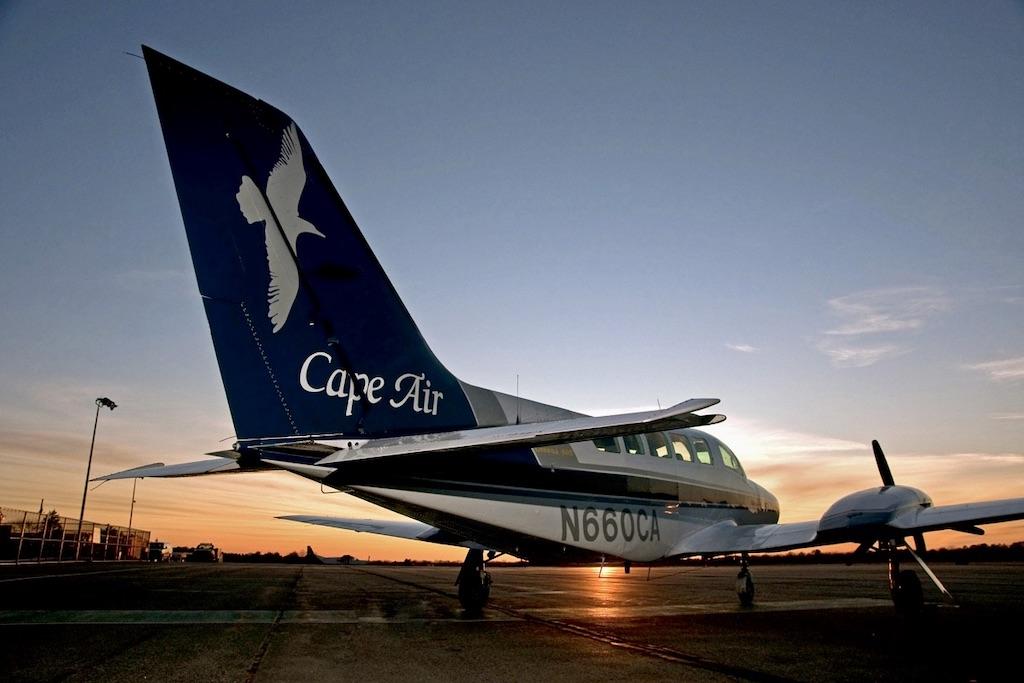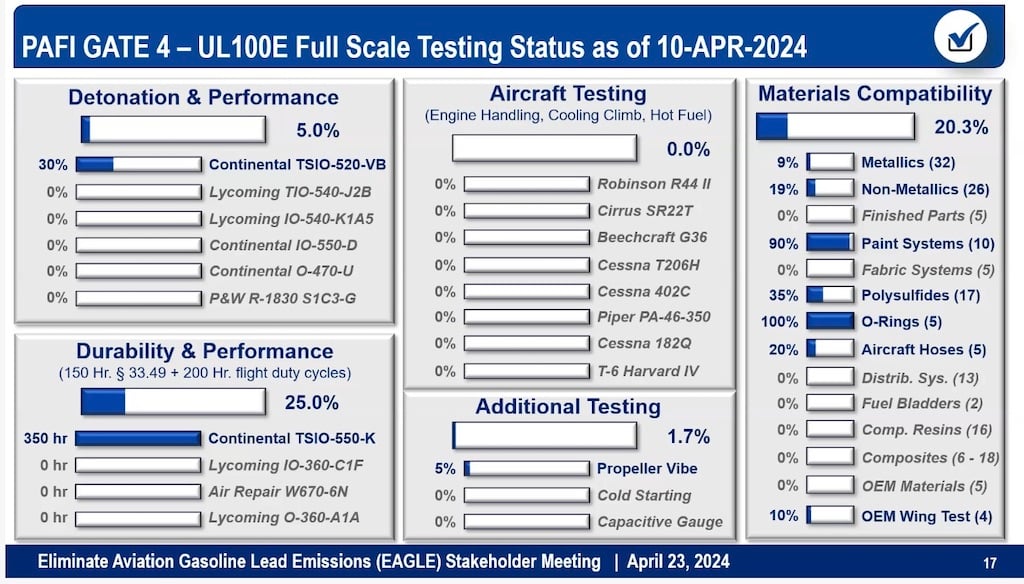
Regional carrier Cape Air, which operates Cessna 402C twin pistons, is receiving UL100E.
Principals of the industry-government effort to develop an unleaded aviation gasoline that will work across all piston aircraft have provided details on the testing being done on the lone fuel candidate to survive an FAA-led evaluation program.
Developed by partners LyondellBasell and VP Racing Fuels, the 100-octane unleaded avgas—UL100E—last November became the first fuel to advance to full-scale engine and flight testing under the FAA's Piston Engine Aviation Fuels Initiative (PAFI). The developers of a second candidate fuel, Afton Chemical and Phillips 66, suspended work on their formulation after it failed to clear the third of PAFI’s multiple testing “gates.” The different outcomes of the two fuel candidates followed more than two years of testing.
In their latest public briefing on April 23, principals of the Eliminate Aviation Gasoline Lead Emissions (EAGLE) effort filled in details on the full-scale testing of UL100E, which, if successful, could lead to a fleetwide authorization of its use in most piston-engine aircraft in 2025. They also provided updates on two high-octane unleaded fuels that have advanced separately of PAFI through the FAA’s supplemental type certification (STC) process: General Aviation Modification Inc.’s (GAMI) G100UL and Swift Fuels’ 100R.
10 Engines And Eight Aircraft

Full-scale testing of UL100E under PAFI is expected to take 12-18 months and involves engine performance testing on 10 different engine models, including Continental, Lycoming, Air Repair, and Pratt & Whitney types, and flight testing on eight aircraft models. The aircraft being tested are the Robinson R44 Raven II, Cirrus SR22T, Beechcraft G36, Cessna T206H, Cessna 402C, Piper PA-46-350, Cessna 182Q and T-6 Harvard IV.
A supply of 50,000 gal. of UL100E is being distributed to companies and institutions nationwide and in Canada, with the FAA’s William J. Hughes Technical Center near Atlantic City, New Jersey, receiving the largest portion of 17,400 gal. Other quantities are being provided to Cape Air, Cirrus Aircraft, Continental Aerospace Technologies, Embry Riddle Aeronautical University, Hartzell Propeller, Lycoming Engines, National Research Council Canada, Piper Aircraft, REL, Robinson Helicopter Co., Textron, and Van’s Aircraft.
As of April 10, about 20% percent of materials compatibility and 5% of engine detonation and performance testing had been completed under the PAFI Gate 4 full-scale testing round, said Tim Owen, a former employee of Continental Aerospace Technologies who works for the FAA.
“We have a high confidence level that (UL100E) will complete the rest of the testing adequately,” Owen told the online briefing. “There may be some accommodations that will have to be made for a small percentage of the [engine] fleet that will be incorporated in this process as well.”
GAMI G100UL Status
Among the original fuel developers, GAMI was the first to discover the holy grail of 100-octane unleaded avgas, having obtained STC approval from the FAA in September 2022 to run G100UL in all spark ignition piston-engine airplanes. The company is working to line up distributors for its product but is facing headwinds from industry groups that have expressed a preference for a fuel formulation based on an industry-consensus specification.
GAMI announced at the recent Sun ‘n Fun Aerospace Expo that jet-fuel supplier Vitol Aviation “has produced an initial production tank of approximately 1.2 million gal. of G100UL [that is] now available for sale,” said Lirio Liu, executive director of the FAA Aircraft Certification Service.
“Right now, GAMI has an approved model list, supplemental type certificate approval to use G100UL avgas in all certified piston engines and airplanes,” Liu said. “They also have obtained an STC for rotorcraft and are working that project with the FAA. GAMI has submitted a flight-testing report for this project based on flight-testing that was conducted using a Robinson helicopter.”
Swift Fuels has submitted conforming test results for an initial STC allowing the use of 100R in aircraft, data the FAA is reviewing, Liu said. Once the agency approves the initial STC, Swift plans to expand the approved model list of piston aircraft and engines that can burn 100R later this year. The company is also applying for an industry-consensus product specification through standards organization ASTM—something GAMI’s fuel lacks.
Indiana-based Swift has produced lower-octane UL94 unleaded avgas since 2015, a fuel that is available at 35 airports nationwide, a relatively small number of airfields. “It’s our company’s intent that UL94 will cease and be replaced by 100R in the months ahead,” said Swift CEO Chris D’Acosta, who called into the briefing.





